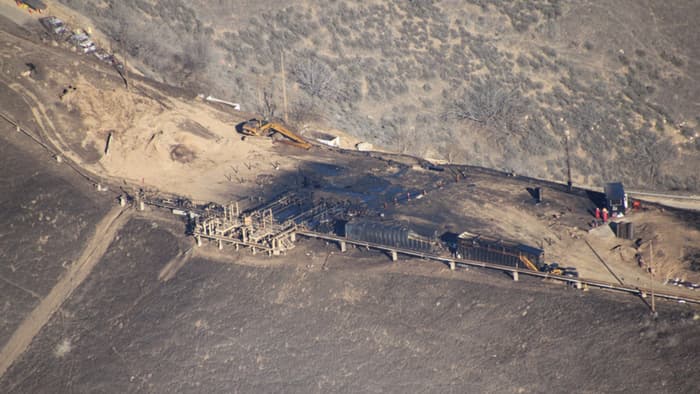Methane's concentration in the atmosphere might be outweighed and outlasted by the more bountiful CO2, but this greenhouse gas is perfectly capable of doing some damage while it's up there. Due to its superior radiation-trapping abilities, methane presents a much more potent threat to the climate than CO2 does pound-for-pound, so monitoring the source of methane emissions is therefore pretty important. And it looks like we might have a new tool at our disposal, with NASA announcing the first observation of a single methane leak on our planet's surface from an Earth-orbiting spacecraft.
In October 2015, workers at the Aliso Canyon gas facility discovered a massive leak stemming from one of the site's wells. The disaster spewed more than 100,000 tons of methane into the atmosphere before it could be plugged the following February, with researchers estimating the impact to the climate to be equivalent to the annual emissions from half a million cars.
While all this was happening, NASA's Earth Observing (EO-1) satellite was floating somewhere overhead in low-Earth orbit, as it had done since launching in 2000. EO-1 was only scheduled to fly for one year with its primary mission to demonstrate new land-imaging instruments, one of which was the first-of-its kind Hyperion spectrometer capable of showing the land-surface in more than 220 spectral colors.
As part of an investigation into the gas leak, NASA scientists had EO-1 direct its gaze toward the Aliso Canyon site, where Hyperion detected the plumes of methane belching from the site on three separate overpasses during the winter of 2015-16. These observations were backed up by measurements taken a little closer to Earth, aboard NASA's ER-2 aircraft carrying the agency's Airborne/Infrared Imaging Spectrometer.

Comparison of detected methane plumes over Aliso Canyon, California, acquired 11 days apart in Jan. 2016. On the left, as captured by NASA's AVIRIS NASA ER-2 aircraft and on the right by the Hyperion instrument on NASA's Earth Observing-1 satellite in low-Earth orbit.
"This is the first time the methane emissions from a single facility have been observed from space," says David R. Thompson, research scientists at NASA's Jet Propulsion Laboratory. "The percentage of atmospheric methane produced through human activities remains poorly understood. Future instruments with much greater sensitivity on orbiting satellites can help resolve this question by surveying the biggest sources around the world, so that we can better understand and address this unknown factor in greenhouse gas emissions."
With its significant supply of Earth-facing satellites and aircraft, NASA has emerged as an important resource for monitoring the planet's health in the face of a changing climate. From revealing how mounting CO2 is turning the globe an undesirable shade of green to picking up on undetected sources of dangerous toxic sulfur dioxide emissions, the work of NASA mightn't be as important in getting us to Mars as it is in one day preventing a forced migration.
Source: NASA
